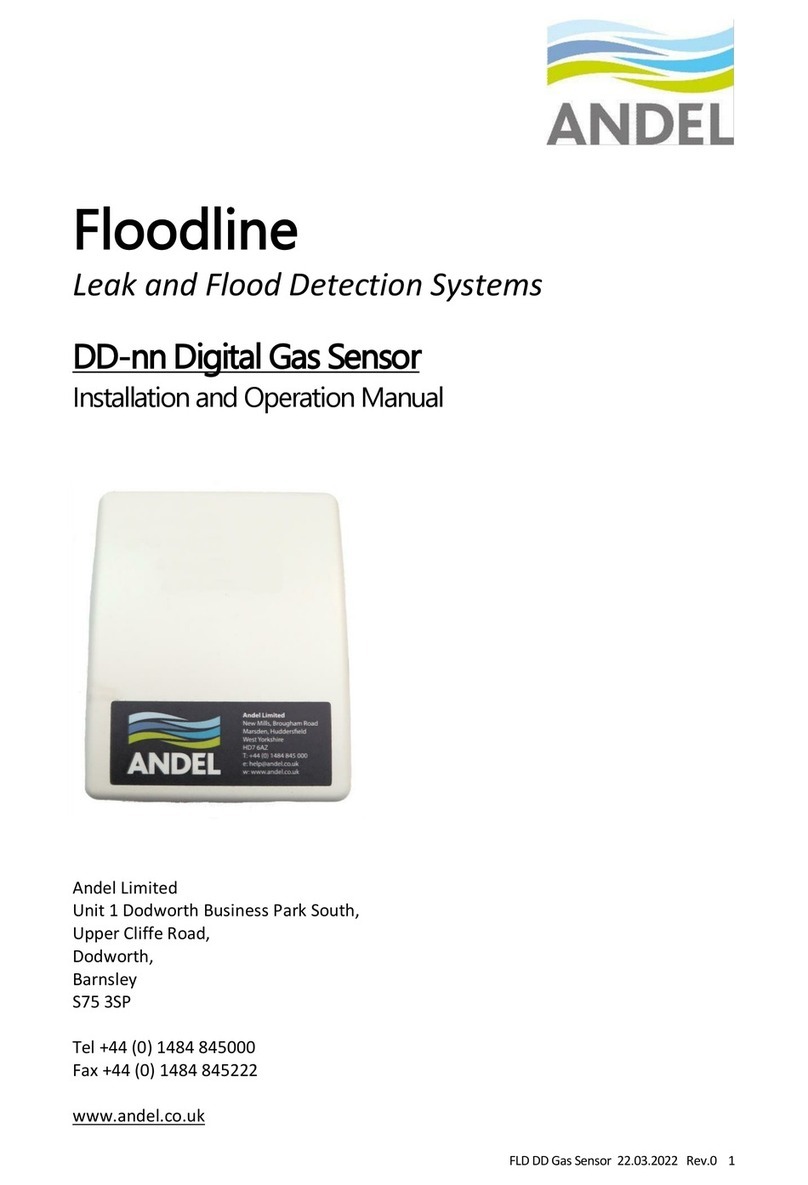FL 128 Multizone System 15.01.2021 6
Introduction
Floodline leak detection systems are designed to detect water/liquid leaks within buildings. The alarms
generated by the Floodline systems allow early action to be taken to prevent damage, reduce disruption and
limit loss caused by unnoticed leaks. Floodline systems are installed in sensitive and critical areas to give early
warning of leakage from any source and typical installations include modern offices, call centres, historic
buildings, communication rooms, dealing rooms, etc. Floodline systems operate on a zoned principle and an
alarm in one zone has no effect on the function and normal monitoring of other zones within the same system.
The Floodline 128 control panels operate a network of leak detection zones and each zone may be a short
length or a single point - or - many metres in length or multiple points. The whole system is continuously
monitored for leaks and continuity.
The zoned principle of the Floodline systems has several distinct advantages:
1. Each zone is separate and an alarm in one zone has no effect on the normal
function of the rest of the system.
2. Each zone is continuously monitored for either leak or system fault.
3. Different types of sensors can be “mixed and matched” from zone to zone to
meet installation requirements.
4. True multi-zoning means the system can handle, display, and report any number
of simultaneous alarms.
5. No minimum or maximum zone length or size.
6. Separate volt-free (relay) outputs can be provided for each zone allowing
comprehensive information to be transmitted onwards and which can allow
zone prioritisation, i.e. “double-knock” facility.
7. Cost of installation can be better controlled through choice of zone size.
8. Systems are easy to install, service, repair and operate.
9. Systems are easy to customise to individuals current and future needs.
Floodline 128 Multi-Zone System
The system will be controlled by one or more FLOODLINE 128’s, which are available with zones sizes of 32, 64,
96 and 128. The control system consists of a base unit and a control unit. The base unit houses the system
power supply, detection modules and main control circuitry. The control unit displays full text descriptions of
any current alarms and provides further visual and audible indication that an alarm is active. The user/engineer
controls and sets up the system from the control unit. The 32, 64, 96 and 128 zone base units are all the same
physical size and are wall mounted and can be fixed locally to the detection areas or remotely in a convenient
plant or equipment room. The control unit can be mounted locally to the base unit or remotely in an office or
reception area along with other alarm systems. Each system is an isolated, stand-alone unit, requiring a
220/240Volt 50Hz mains power supply and is complete with integral sealed lead-acid battery for back-up.




























